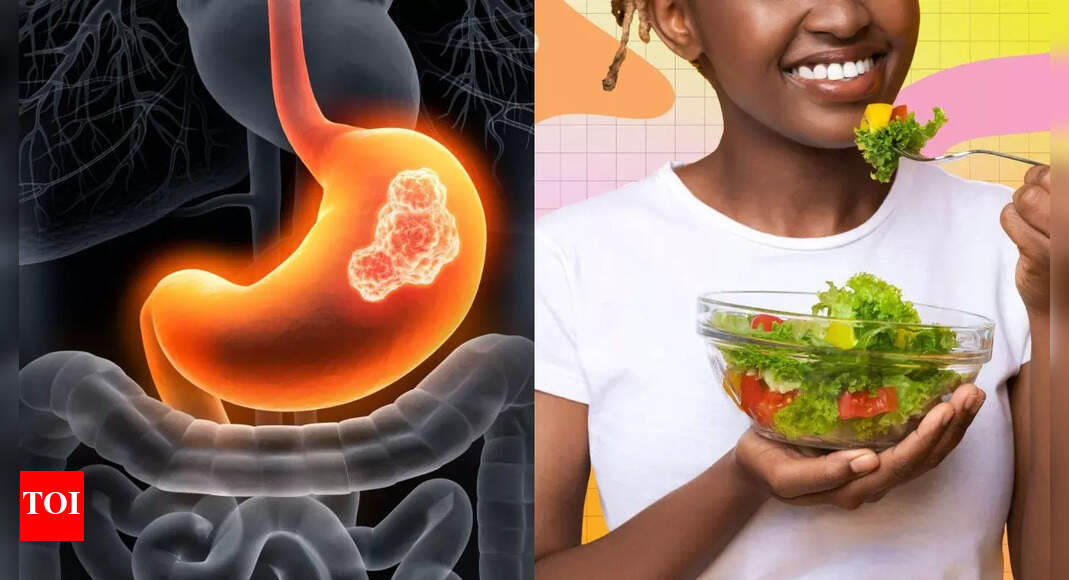You must have heard how colon cancer is on the rise in young adults, especially those under the age of 50. It’s a type of cancer that develops in the tissues of the colon or rectum. It starts in the large intestine (colon) and often develops from small, noncancerous clumps of cells called polyps. It’s one of the most common types of cancer worldwide and the second leading cause of cancer death in the United States.Apart from colon cancer, liver cancer is also a global concern, especially with nonalcoholic fatty liver disease (NAFLD) and metabolic dysfunction-associated steatotic liver disease (MASLD) as rapidly growing causes.Now, colon cancer, liver cancer, and some other types of cancer account for a greater umbrella, called gastrointestinal cancer, or in short, GI cancer, and it is one of the leading causes of cancer in today’s time. To elaborate more, gastrointestinal (GI) cancers are malignant tumors that develop in the digestive tract, including the esophagus, stomach, liver, pancreas, small intestine, colon, rectum, gallbladder, and bile ducts.
However, all is not grim around here. A recent study published in Nutrition Research has shown that adding certain fruits and vegetables to your meals could reduce your risk of gastrointestinal (GI) cancers (affecting organs like the stomach, liver, pancreas, and colon) by up to 36%.What does the study reveal?Read on to know more.
What does the study say?
In a move that could influence dietary guidelines globally, a recent study in Nutrition Research found that individuals who ate more white-fleshed fruits and vegetables had a 36% lower risk of developing gastrointestinal cancers over an eight-year period.Researchers followed over 11,000 adults who visited the National Cancer Center in Korea between 2007 and 2021. Over the follow-up period, 214 GI cancer cases were recorded, drawing on data from national cancer registries. Dietary information came from detailed food frequency questionnaires that captured consumption habits. Rather than sorting produce by outer color, the study classified fruits and vegetables by interior ‘flesh’ color; so apples, pears, and bananas were grouped as ‘white-fleshed’, while tomatoes and strawberries fell into red and purple categories.White-fleshed produce (e.g., apples, cauliflower, bananas) showed the strongest protection, reducing GI cancer risk by 36%.Red and purple produce also offered benefits, but to a slightly lesser degree (around 32%).
Why ‘colors’ matter: The science behind it
The protective power of these fruits and vegetables likely comes from their rich supply of antioxidants, vitamins, minerals, and fiber. These nutrients can help neutralize harmful free radicals, support digestion, and reduce inflammation, all factors tied to lower cancer risk.Now, white-fleshed produce often contains fiber, vitamin C, and compounds like flavonoids that may support gut health and reduce inflammation. Meanwhile, red and purple produce bring lycopene, anthocyanins, and other plant pigments with strong antioxidant effects.
Interestingly, light cooking methods like steaming or lightly sautéing can enhance nutrient absorption in some vegetables.While this study focused on flesh color, other research underscores a broader truth: a varied, colorful, plant-rich diet offers the best protection. Whole grains, fiber, fruits, and folate have also been associated with reduced colorectal cancer risk.
How to incorporate ‘colors’ in the daily diet
Here’s how you can boost your cancer protection through diet:Eat white-fleshed produce daily: Try one or two servings of apples, bananas, pears, cauliflower, or similar foods each day. About 188 grams, a bit under two cups, can count towards the observed protective amount.Mix in red and purple produce: Add tomatoes, strawberries, red bell peppers, or berries to meals for variety and added benefit.Aim for color diversity: Strive for at least 2 cups of fruit and 3 cups of vegetables per day, covering a spectrum of colors to maximize nutrient intake.Cook lightly if preferred: Light cooking can improve nutrient availability, such as lycopene in tomatoes and beta-carotene in carrots.Finally, mix it up! Add chopped cruciferous vegetables (like broccoli, kale, cabbage, cauliflower) to stir-fries, enjoy banana slices on cereal, pair apples with peanut butter for a snack, or blend strawberries in smoothies.
The bottom line
Fresh fruits and vegetables have always been hailed as the holy grail of overall health. Now, as the study has established, they can serve as a protective shield against cancer as well.
Starting with a white-fleshed fruit or vegetable each day can already contribute to a meaningful drop in GI cancer risk. But don’t just stop there; include reds, purples, greens, and other colors to cover more protective nutrients.This study also highlights that healthy eating doesn’t need to be devoid of taste. Jazz up your plate and palate and make your meal more enjoyable by swapping like apple slices with meals, steamed cauliflower, a bowl of berries, or a mixed salad! Your taste buds shall be appeased, and the GI cancers shall remain at bay!
